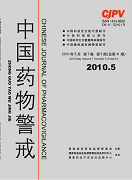|
|
The Significance of Clinical Features of Crohn's Disease in Treatment Modalities
ZHANG Ru, LV Hong, QIAN Jia-ming, SHEN Bing-bing, YANG Xiao-ou, CHEN Qiang
2010, 7(5):
269-271.
Objective To evaluate the relationship between clinical features of Crohn's disease(CD) and medical treatment modalities in a historical chort. Methods A total of 158 patients with CD in Peking Union Medical College Hospital from 1983 to 2007 were included. Demographic and clinical features as well as medical treatment regimens were studied. Results of the158 patients with CD, male:female ratio was 1.98:1. The mean age at disease onset was 33.8±15.6(range 7~78) years. Mild, moderate, and severe CD comprised 15.8%, 30.4%, and 53.8% of the patient population, respectively. The peak onset age was 20~29 years old, with 29.1% of patients being in the age group. Patients with mild CD(96.0%) were more frequently treated with aminosalicylic acid than those with moderate(87.5%) and severe(76.5%) disease(P=0.028). Patients with severe CD(70.6%) more often required nutritional support than those with mild(28.0%) and moderate(43.8%)(P =0.000). It appears that medical treatment regimens and the requirement for surgical intervention were independent of the disease location of CD. More patients presented with extraintestinal manifestations after Year 2000(52.4%) thanbefore Year 2000(38.2%)(P=0.048). In addition, aminosalicylic acids, corticosteroids, immunomo-dulators, and nutritional support have been more widely used since Year 2000. A higher polymorphic neutrophil per-centage count in peripheral blood and lower serum total protein and albumin were associated with an increased risk for surgical intervention. 59 patients(37.3%) required surgical therapy, of whom 53(89.8%) underwent surgery for CD-associated complications, including intestinal obstruction, perforation, or fistula. Conclusion s The peak onset age of CD was 20~29 years. There was a trend of more frequent use of aminosalicylates, corticosteroids, immunomodulators, and nutritional support since Year 2000. Choice among medical treatment regimens and the requirement of surgical intervention appeared to be associated with disease severity, but not disease location. Poor nutritional status was associated with an increased risk for surgical intervention.
References |
Related Articles |
Metrics
|
